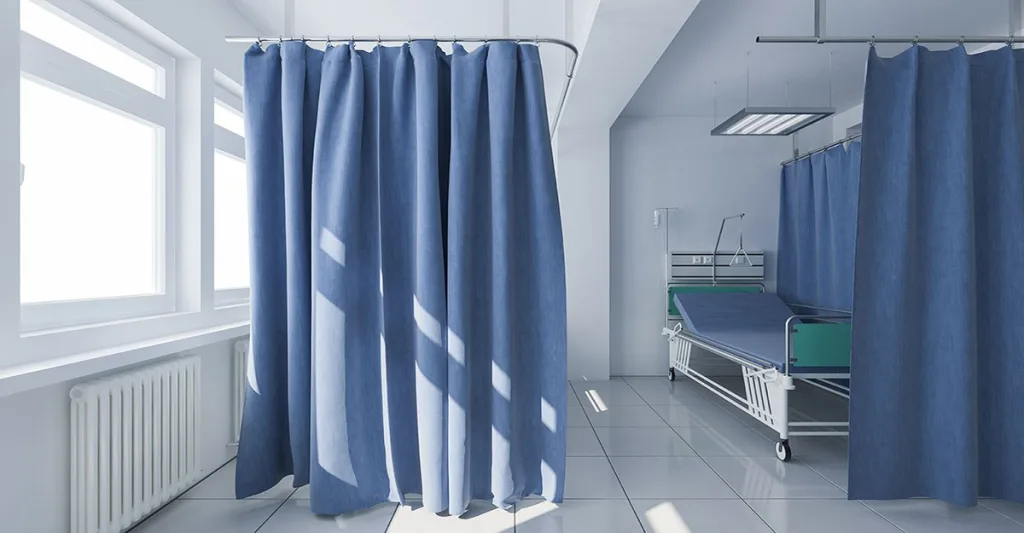It's hard to believe that a privacy curtain would be a focal point of lawsuits involving nurses, but it happens. I wrote about a similar situation in a recent blog. The following case describes another unfortunate outcome involving a patient's privacy curtain.
Reported facts of the case
A male patient who was diagnosed with dementia several years earlier was admitted to a nursing home on his physician's recommendation. The patient had a history of "behavior disorders," delusions, and was a fall risk. He also was known to wander and suffered from insomnia. He was taking several medications with known side effects, including hallucinations and delusions.
While at the nursing home, the patient fell five times, with three of those falls resulting in injuries. The nursing staff was aware of this, and it was recommended that they make more frequent checks on the patient. However, no official order was made, nor was the directive for more frequent checks always followed.
During a night shift, a nurse's aide found the patient dead over an hour after the nursing staff last checked on him. The cause of death was determined to be strangulation due to the patient's shirt "becoming entangled with a privacy curtain." The autopsy toxicology report also showed traces of morphine, which had not been prescribed. The patient's widow and three adult children filed a lawsuit alleging:
- The patient was the victim of systemic abuse, mistreatment, theft, inappropriate restraint, and overmedication.
- The defendants failed to adequately monitor or respond to the patient on the day of his death, wrongfully causing his death.
The nursing home and staff filed a Motion for Summary Judgment before the trial court.
Trial court analysis and decision
The nursing home and staff's argument in favor of their motion was that the patient's family did not produce evidence to support their allegations due to a technical error in their physician's expert witness report. However, the court determined that the physician's testimony was admissible, so the only issue to evaluate was whether the testimony was sufficient to establish a standard of care, breach of that standard, and causation of the death. As to the standard of care, the court held that the expert detailed what should have been done for this patient, including:
- Placing him in a room where he could be seen by the nurses in the nursing station
- Observing him every 15 minutes
- Moving or properly stowing all "obstructions," such as the privacy curtain, to prevent the patient from "getting twisted in the curtain"
The physician expert witness report also detailed that the patient had been left unattended for over an hour, and the defendants did not allow the use of bed alarms even though the nursing staff knew the patient was a fall risk.
The court acknowledged that the staff also knew of the patient's risks of falling, wandering, and other behavioral problems, but did little to protect the patient.
The court opined that the staff's failure to protect the patient, along with the expert witness report regarding what should have been done, were sufficient for a reasonable jury to conclude that a breach of the standard of care took place. The evidence also supported that the breach of the standard of care caused the death of the patient. The defendants also argued that the nursing staff 's negligence should not be attributed to the corporate defendants named in the lawsuit. The court held that decisions such as not allowing the use of bed alarms were made at "a corporate -- rather an individual agent -- level," so no summary judgment could be granted as to the negligence claims alleged by the family. As to the allegations that the patient was subjected to systemic mistreatment, no such evidence was presented by the family to support that allegation. As a result, summary judgment was granted on those allegations. However, as to all the other allegations that relate to the negligence by the nursing staff, the court denied summary judgment.
What can you learn from this case?
It's hard to imagine that a privacy curtain could be a factor in a patient's death. Even so, the case points out that even a seemingly benign object must not be overlooked when providing care to a patient who is cognitively impaired. How the patient's tragic death occurred and why morphine that was not prescribed was present in his blood are factors that remain unclear at this juncture. But in any patient care situation, you must use clinical judgment in identifying and removing safety risks to your patients based on their medical condition. The court's decision to deny the defendants' Motion for Summary Judgment for the corporate defendants is also instructive. The corporate or institutional theory of liability for healthcare entities was established in 1965 and is still good law today. The theory states that a healthcare delivery system can be sued when it breaches its direct duties to its patients. These duties include providing competent, qualified, trained, and licensed healthcare providers and adopting and enforcing adequate institutional policies and procedures.
The decision not to use bed alarms was made at the corporate level, not by a physician or nurse.
The nursing staff clearly failed to monitor the patient as needed, and the nurses named as defendants will be required to defend against this allegation. The nursing home also will be required to defend itself against a breach of duty to this patient. To start a conversation about important issues like this one with your fellow nurses, download the Nurse.com social networking app. 






